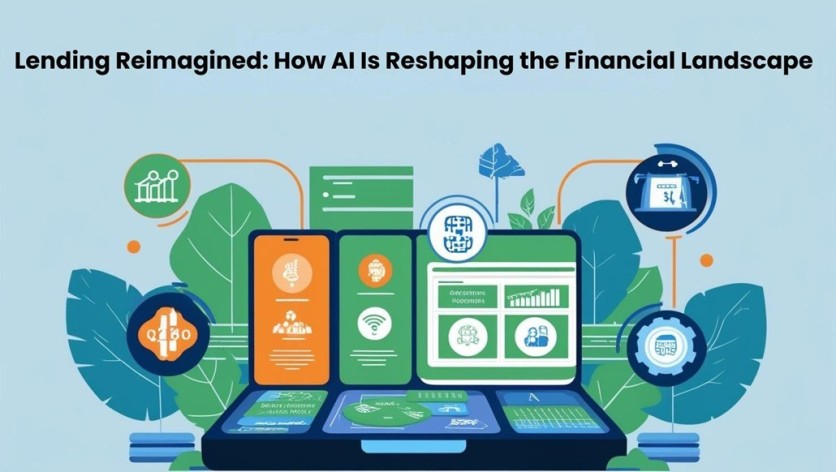
Artificial intelligence is transforming financial services, with automated lending at the forefront of this change. From smarter credit assessments to enhanced fraud detection and personalized customer interactions, AI is redefining operations. Naresh Babu Goolla examines how generative AI is reshaping lending into a more efficient, intelligent system.
A New Chapter in Lending
The traditional lending model, characterized by paper-heavy workflows, long wait times, and rigid credit evaluations, is rapidly giving way to a more agile and intelligent system. At the center of this transformation is Generative AI (GenAI), which is not just improving lending processes but fundamentally reimagining how financial institutions assess risk, detect fraud, manage compliance, and engage with customers. GenAI is ushering in an era where decisions are faster, smarter, and more inclusive.
Smarter Credit Decisions Through AI
One of the most impactful changes Generative AI brings is in credit evaluation. AI systems now analyze structured and unstructured data such as payment history, rental records, and digital footprints to create detailed borrower profiles. This benefits individuals previously considered "credit invisible" and improves financial inclusion. Real-time credit decisioning is now possible, with AI updating risk models dynamically. As a result, loan approvals happen in under five minutes, enhancing efficiency and significantly boosting customer satisfaction.
Defending the Digital Frontline
As lending becomes more digital, so do the risks. Cyber threats and sophisticated fraud tactics demand equally advanced defense systems. GenAI is now integral to fraud detection, employing deep learning to analyze thousands of behavioral variables in real time.
Beyond transaction pattern recognition, AI systems incorporate behavioral biometrics like typing rhythms and navigation habits to flag anomalies. These tools work passively, enhancing security without interrupting the user experience. Importantly, explainable AI models ensure that fraud decisions are transparent and compliant, a growing necessity in today's regulatory landscape.
Reinventing the Customer Journey
Mr. Naresh highlights how customer interaction in the lending space has evolved far beyond scripted chatbots. Intelligent conversational agents powered by GenAI can now engage in fluid, multi-intent conversations, maintaining context across channels like web, mobile, and voice. These agents understand not just user queries but also sentiment and intent, delivering assistance that feels personalized and empathetic.
Predictive analytics takes personalization further by anticipating customer needs. Whether offering loan options or reminding users of deadlines, AI turns static interactions into proactive engagement. Financial institutions report over 30 percent increases in customer interaction quality and retention as a result of these human-centric AI applications.
From Paper to Prediction: Document Automation
GenAI is also revolutionizing back-office operations. Document processing, once a slow and error-prone task, is now largely automated using AI technologies like natural language processing (NLP) and computer vision. These systems extract, classify, and validate data from various document types with high accuracy even when the formats are inconsistent or unstructured.
Regulatory compliance tasks such as KYC (Know Your Customer), AML (Anti-Money Laundering), and financial reporting are now streamlined through AI, slashing operational costs by up to 40 percent. This automation facilitates straight-through processing, which accelerates timelines and enhances scalability.
Toward a Unified AI Ecosystem
The future of lending lies in integrated AI ecosystems. Rather than isolated tools, financial institutions are adopting platforms that combine machine learning, NLP, robotic process automation, and computer vision to drive end-to-end intelligent workflows. These ecosystems enable real-time insights, hyper-personalized services, and superior risk oversight all within a unified environment.
Embedded finance is accelerating this trend. By integrating lending functionalities directly into third-party platforms via APIs or microservices, financial institutions can offer loans right at the point of customer need, increasing both conversion rates and satisfaction, as highlighted by Naresh Babu Goolla.
Ethics at the Core of Innovation
With great power comes greater responsibility. As AI systems become essential to lending, ethical considerations must guide their implementation. Transparent models, bias monitoring, and audit trails are no longer optional; they are vital. Financial institutions that build ethical AI practices foster customer trust and ensure long-term compliance.
In conclusion, Naresh Babu Goolla emphasizes that Generative AI is not just a technological upgrade. It is a foundational shift. From smarter decision-making and fraud detection to seamless customer engagement and automated compliance, AI is creating a more inclusive, efficient, and trustworthy lending ecosystem. Institutions that embrace this shift with foresight and integrity will shape the financial future.
ⓒ 2025 TECHTIMES.com All rights reserved. Do not reproduce without permission.





